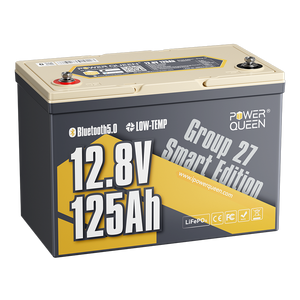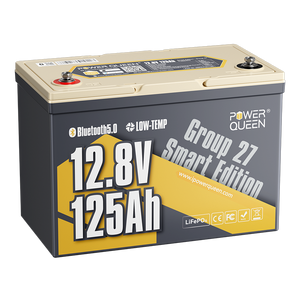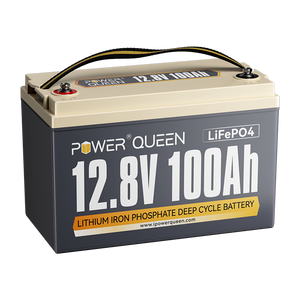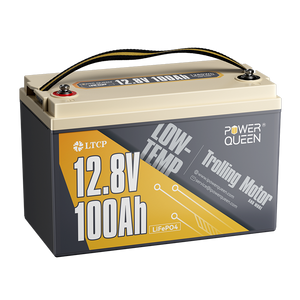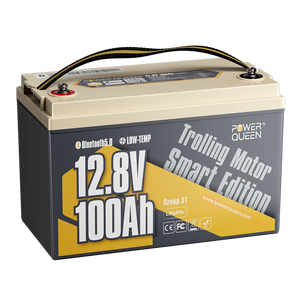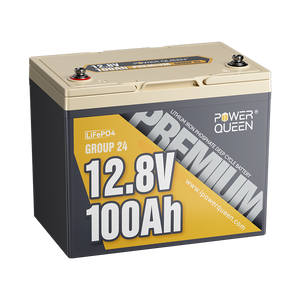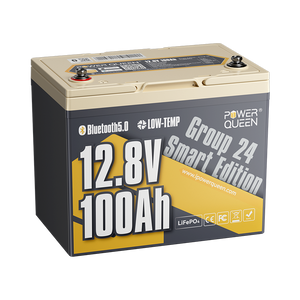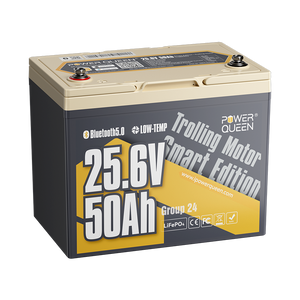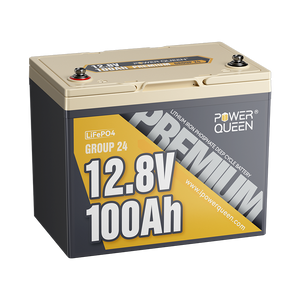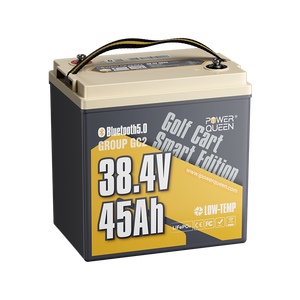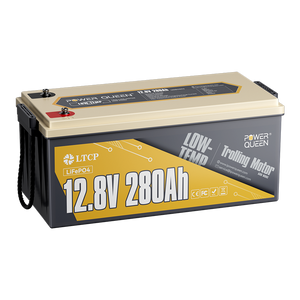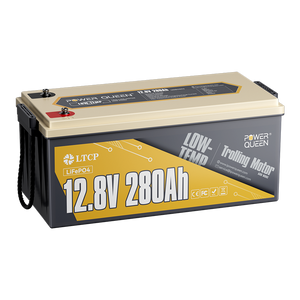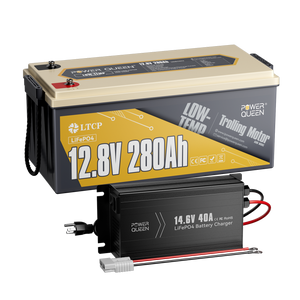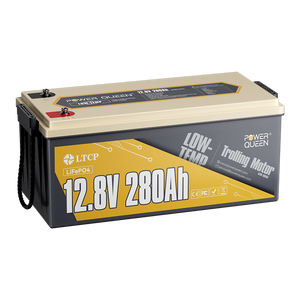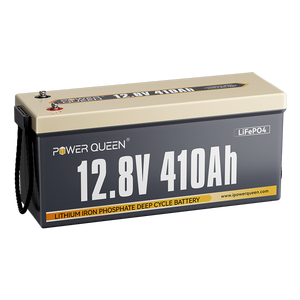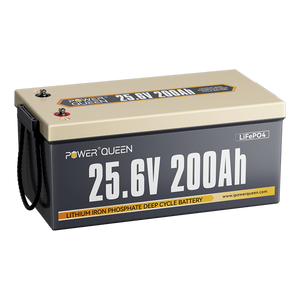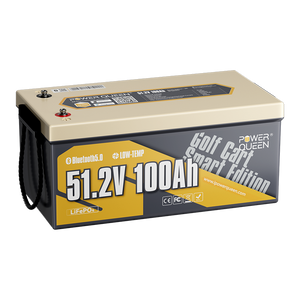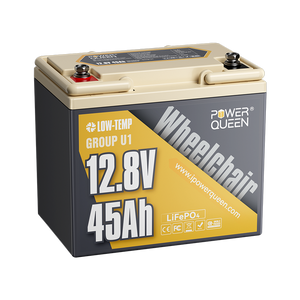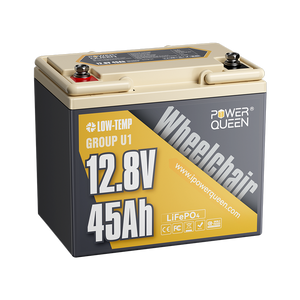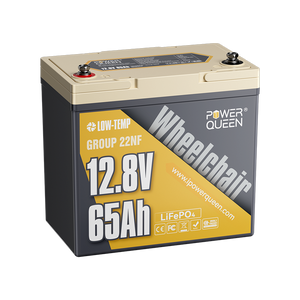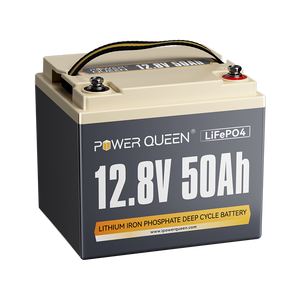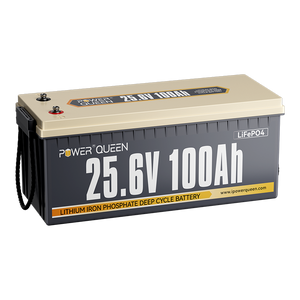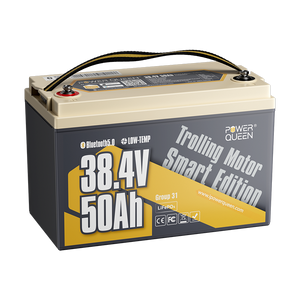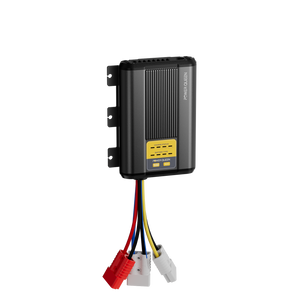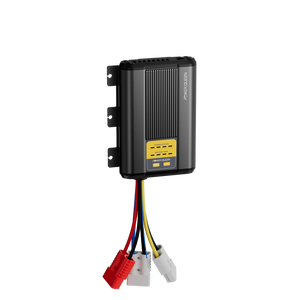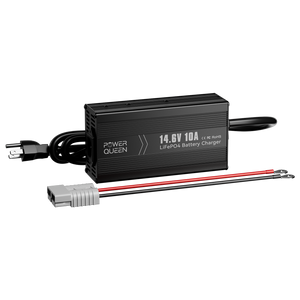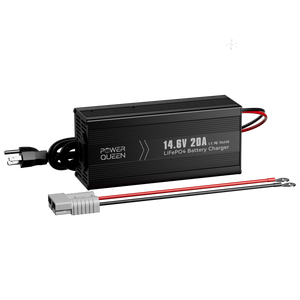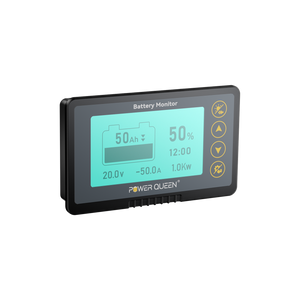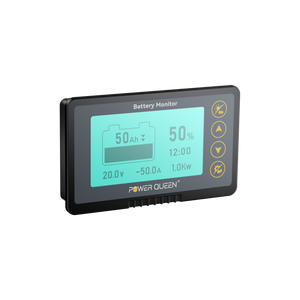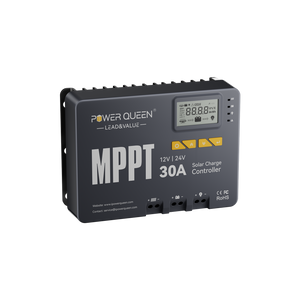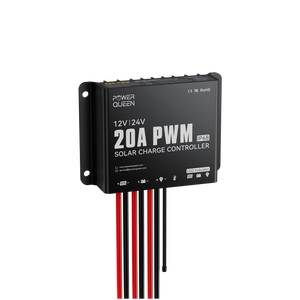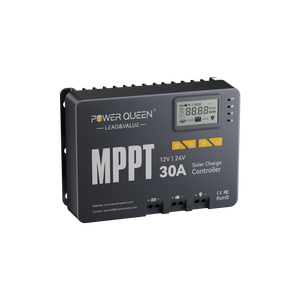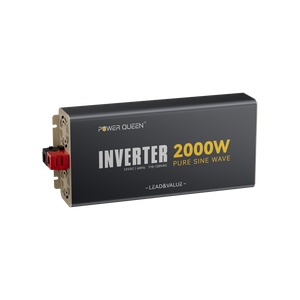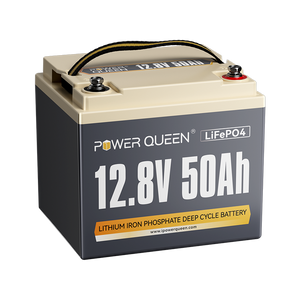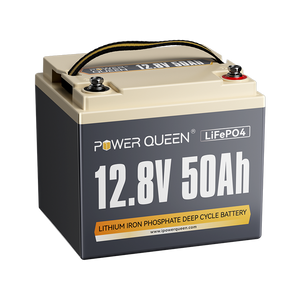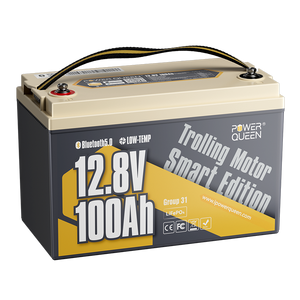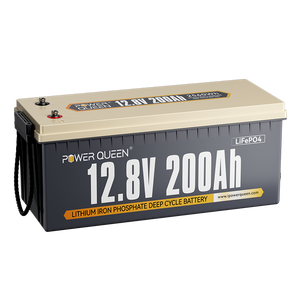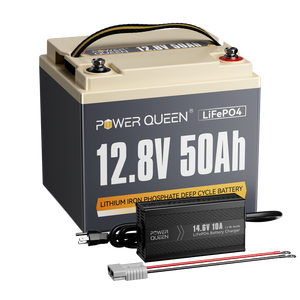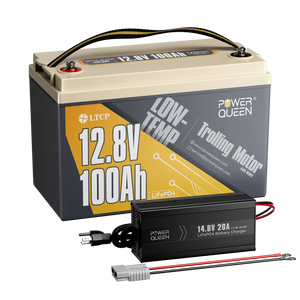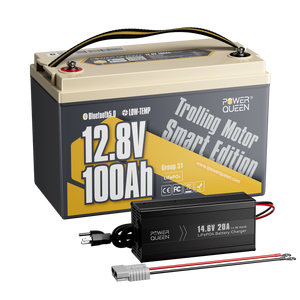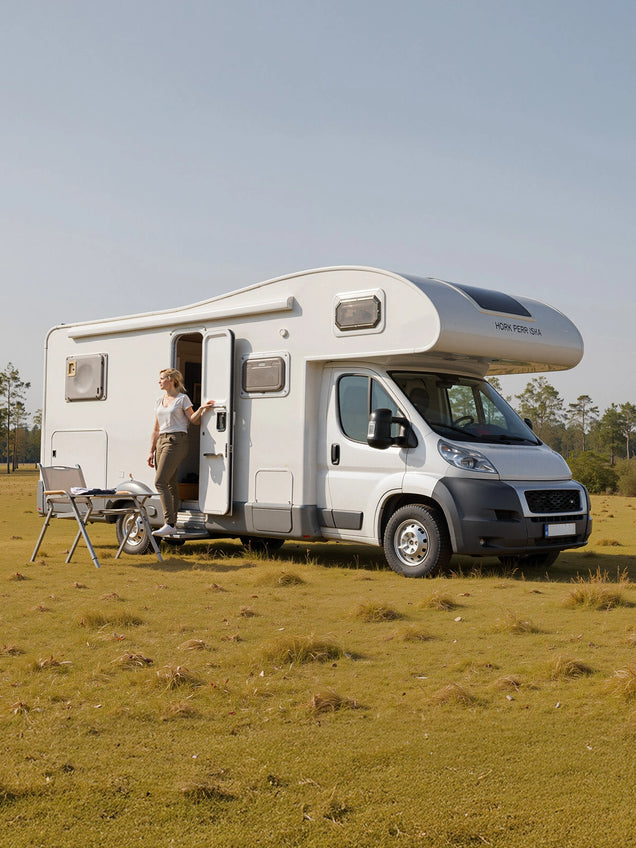Power Queen 12V 100Ah Group24 Smart VS 12V 100Ah Premium Group24
Lithium Iron Phosphate (LiFePO4) batteries have emerged as pivotal power sources for a diverse array of devices, equipment, and cutting-edge technologies. Their BCI compliant sizes facilitate seamless integration as replacements for sealed lead-acid batteries. The Group24 configuration, with a nominal voltage of 12V, finds extensive utility across automotive, recreational vehicle (RV), and marine applications.
Power Queen's 12V Group24 battery lineup features premium selections, notably the 12V 100Ah Premium Group24 Lithium Battery and the 12V 100Ah Group24 Smart Lithium Battery.
This article delves into a detailed comparison of these offerings, elucidating their performance similarities and disparities. By navigating these distinctions, we aim to empower you in selecting the ideal battery solution for your needs.
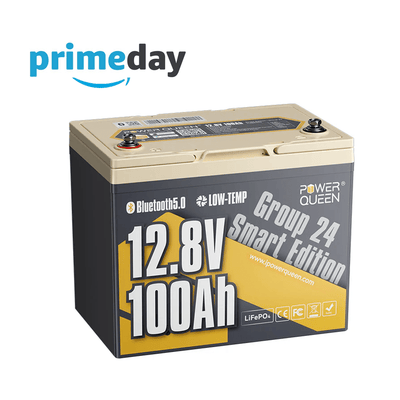

1. Similarities of Power Queen Group 24 And Group 24 Smart
1.1 Basic Performance
Both batteries exhibit comparable performance across most product parameters:
- Size: L10.24W6.61H8.30 inches (L260W168H211mm)
- Nominal Voltage and Capacity: 12.8V 100Ah
- Max. Continuous Charge & Discharge Current: 100A
- Power: Both batteries boast a maximum continuous output power of 1280W.
-
Long-Term Constant Voltage State:
These batteries excel in maintaining balance, ensuring capacities remain stable over time. Continuous charging or discharging of unbalanced batteries may lead to capacity degradation. With round-trip efficiencies reaching 95-98%, they ensure consistent performance.
-
Cycle Life Cycles:
4000+ cycles at 100% Depth of Discharge (DOD)
6000+ cycles at 80% DOD
15000+ cycles at 60% DOD
- Connection: Supporting series and parallel connections (4P/4S/4P4S), they deliver a maximum energy of 20.48kWh. Despite high discharge rates, they provide double the power of lead-acid batteries while maintaining substantial energy capacity.
- Protection Grade: Featuring IP65 ruggedness, they are waterproof and shockproof.
- BCI: GROUP24 (Compatible with Group 24, 27, and 31 Battery Boxes)
To give you a better idea of the product parameters of these two batteries, you can browse the table below:

1.2 BMS - Multiple Protection Structures
BMS is indispensable for ensuring the safe operation of both the Group24 and Smart Group24 batteries.
The BMS is a comprehensive system designed to monitor, evaluate, balance, and safeguard the battery from potential hazards. In the case of Group24 batteries, they are equipped with a built-in 100A BMS featuring an extensive protection system. This system safeguards the battery against over-voltage, over-current, over-heating, over-discharge, and over-charging. Additionally, it balances the battery pack during the charging process.

Continuous charging or discharging of batteries without proper balancing can lead to capacity degradation over time. Hence, ensuring all batteries are balanced is a critical feature to prevent overcharging and maintain optimal performance.
2.Differences Between Power Queen Group 24 And Group 24 Smart
Both Group24 and Smart Group24 lithium batteries have the unique advantages of lithium batteries in their external design and built-in structure. But there are some differences between these 2 batteries.
2.1 Weight & Surge Discharge Current
The weight of the two Group 24 batteries is slightly different: the Smart Group 24 version weighs 21.83 pounds, while the Premium Group 24 version weighs 21 pounds.
Despite the weight difference, the SMART version discharges at up to 500 amps per second, while the Premium Group 24 discharges at 400 amps per second. This means the Smart Group24 lithium battery has a higher instantaneous load capacity. This enhanced capacity provides the power necessary for fast and efficient fishing, ensuring a smoother boating experience.
2.2 Low Temperature Cut-off Protection
Cold weather significantly impacts lithium battery life and performance. It's crucial to adhere to the recommended lithium battery temperature ranges:
-
Charging: 0℃ to 50℃ (32°F - 122°F)
-
Discharge: -20℃ to 60℃ (-4°F - 140°F)
-
Storage: -10℃ to 50℃ (14°F - 122°F)
Charging lithium batteries below freezing hampers the absorption of lithium ions by the anode, resulting in lost capacity and diminished performance. Here's how cold temperatures affect battery operation:
- Reduced Capacity:Cold temperatures slow down chemical reactions, reducing the battery's capacity. This translates to decreased power and shorter run times.
- Increased Internal Resistance:Higher resistance impedes current flow, lowering battery performance.
- Potential Hazards:Extreme cold can freeze the electrolyte, causing excessive plating that may puncture the diaphragm, leading to short circuits, capacity loss, leakage, or even explosions.
To ensure longevity, performance, and safety, it's crucial to keep the battery within the recommended temperature range. This ensures optimal operation and minimizes potential hazards.
Incorporating a protectionist mechanism helps maintain battery performance, capacity, and lifespan while mitigating the risks associated with low temperatures.
The Smart Group24 lithium battery offers a significant advantage over the Premium Group24 due to its 100A BMS featuring low-temperature cut-off protection. This innovative feature actively monitors individual cell temperatures, permitting charging only when temperatures exceed 32°F (0°C). Charging halts automatically if temperatures drop below -4°F (-20°C), resuming once temperatures surpass 5°F (41°C).

For users spending extended periods in cold climates or during winter, the Smart Goup24's cryogenic cut-off protection offers an added layer of energy security.
2.3 Convenient And Comprehensive Bluetooth Monitoring
One standout feature of the smart Group24 is its Bluetooth-enabled wireless connectivity, eliminating the need for cumbersome wiring through walls. Unlike traditional wired battery monitors that require additional wiring and expenses for extended distances, our Smart Group24 battery's integrated Bluetooth functionality offers seamless monitoring without any extra costs. Say goodbye to tangled wires and excessive spending with our convenient wireless solution.
Simply scan the QR code on your battery or download the POWER QUEEN APP from your preferred app store for swift registration and setup. With this, you can effortlessly track your battery status on your smartphone or tablet, within a 32-foot (10-meter) range.
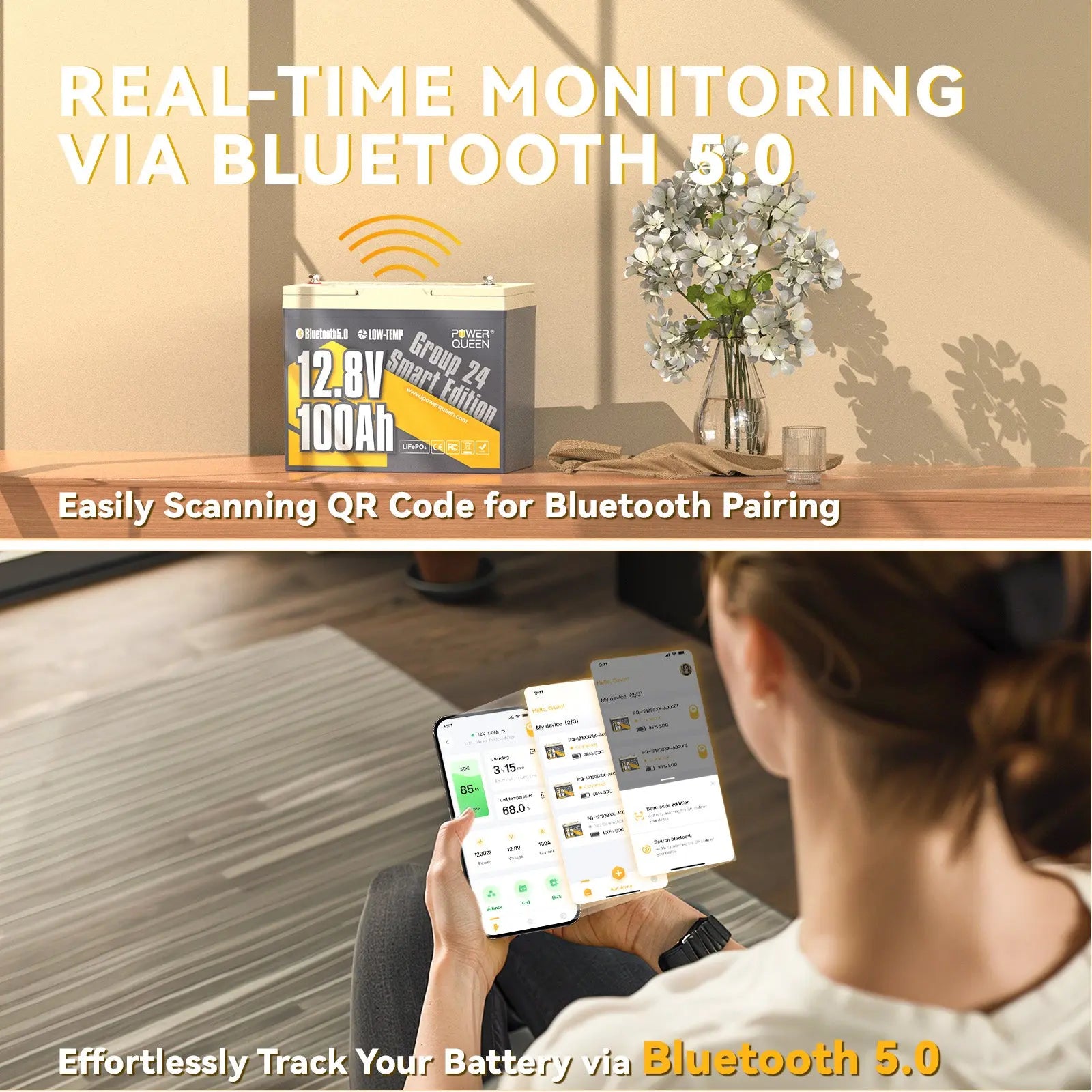
Our dedicated Bluetooth devices offer easy monitoring, including:
- State of Charge (SOC): Keep tabs on remaining power anytime
- Remaining Ah and Voltage: Gain insight into current capacity and voltage levels
- Discharge and Charge Time: Understand charging and discharging cycles for better planning
- Current Amplifier Consumption: Monitor device power consumption
- Cell Details: Monitor individual voltages to gauge battery health
- Estimated Charging Time
- Battery Temperature
- Cycle Life
- BMS and Equalization Status
Experience seamless battery monitoring like never before with our Bluetooth lithium battery monitor.
Please take note of the following:
-
The current app does not offer the option to switch between Celsius and Fahrenheit temperature settings.
-
Individuals without smartphones or limited proficiency with electronic devices should carefully consider this aspect, despite the straightforward procedure. For further inquiries, please reach out to Power Queen technical support for assistance.
For battery health monitoring, the Premium Group24 necessitates an extra wired battery monitoring system as it lacks Bluetooth functionality. Conversely, the Smart Group24 lithium battery incorporates Bluetooth functionality, providing a plethora of features and valuable information conveniently accessible through your smartphone.
3.Feedback From Users
Let's explore reviews of the Group24 and Smart Group24 by various video bloggers. These insights will assist you in making a well-informed decision and optimizing performance based on your specific needs.
Youtube Review About Power Queen 12.8V 100Ah Smart Group24 LiFePO4 Battery
Youtube Review About Power Queen 12.8V 100Ah Premium Group24 LiFePO4 Battery
4.FAQs About Power Queen GROUP24 VS SMART GROUP24
1.Can I use this battery as a car starter battery or golf cart battery?
NO. Power Queen does not currently offer starter batteries or golf cart batteries.
2.Can I connect these two batteries in series?
No. The cells and BMS of these two batteries are different, so we don't recommend connecting them in series, which will damage the internal structure of the batteries and reduce their life span.
3.How to charge the battery?
We don't recommend using a lead acid charger for a long time, as it will affect the performance and life of the lithium iron phosphate battery. Suggest reading: Can I Charge LiFePO4 Battery with a Lead Acid Battery Charger?
There are three reliable charging methods: solar panel, Li-FePO4 charger and generator.
4.What do I need to be aware of when I receive my shipment?
When you receive your shipment, it's important to note that the battery's State of Charge (SOC) may be low due to shipping and storage. For optimal performance, we advise promptly charging the battery to prevent complete discharge.
If you anticipate not using the battery for an extended period, it's best to charge it to 30%-50% SOC and conduct maintenance every three months. This practice ensures battery performance and stability are maintained. Suggest reading: How to Properly Store LiFePO4 Lithium Batteries
5.Conclusion
Both the 12V 100Ah Premium Group24 and the 12V 100Ah Group 24 Smart offer comparable performance to the lithium battery. However, the key distinction lies in the Smart Group24's additional features, including low-temperature cut-off protection and Bluetooth functionality.
If you reside in colder climates or frequently encounter low temperatures, or if you value real-time battery monitoring, the Smart Group24 is the ideal choice.
On the other hand, if you're working within a budget or prefer not to rely on smartphone connectivity, the Group24 remains a solid option.You'll need to pair it with an additional wired battery monitor, which makes it easy to monitor the health of your battery, but you'll need to be close to the system to see it.
